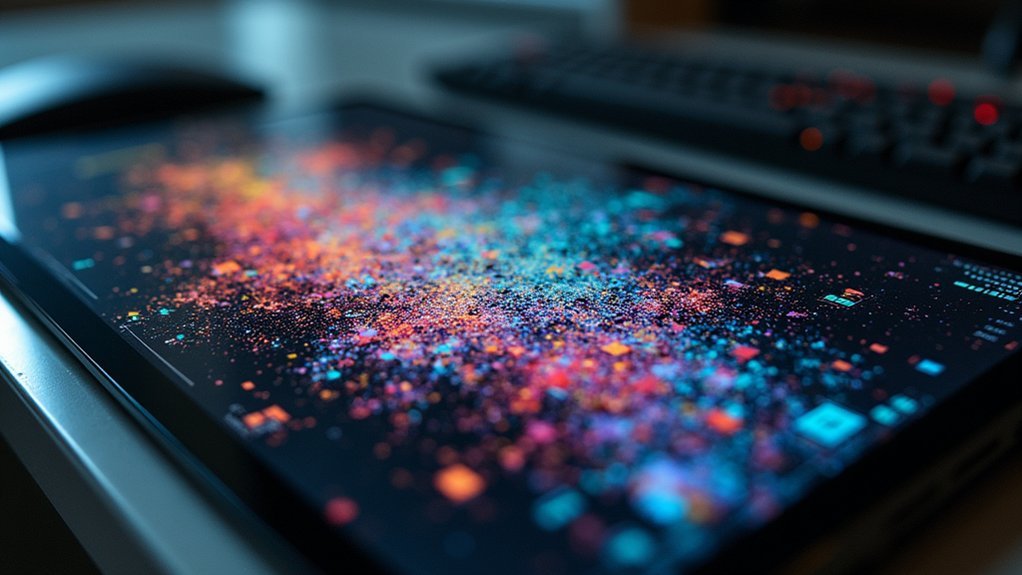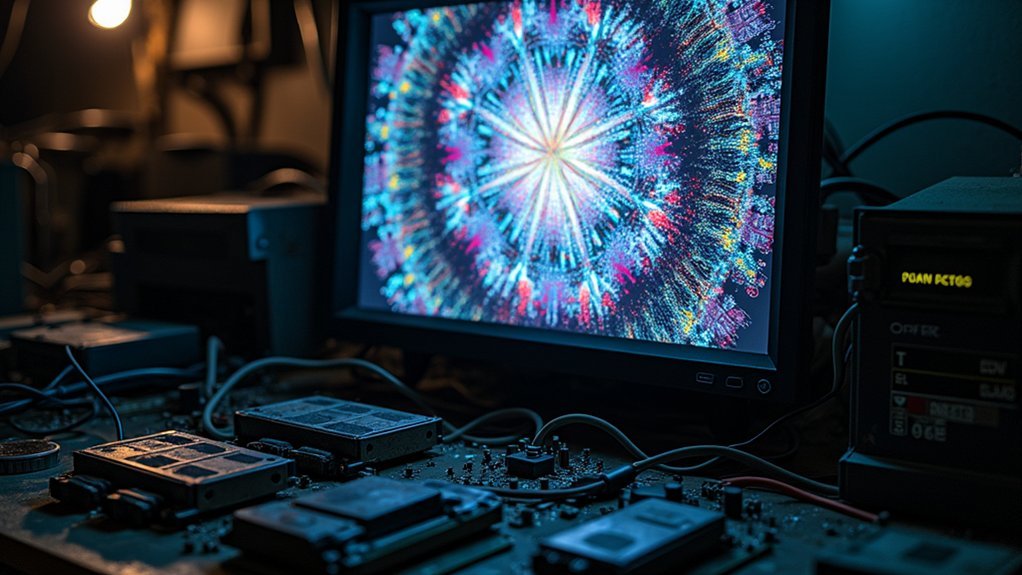Scientific images often fail to open due to file format incompatibilities, especially with proprietary microscopy formats. You’ll encounter problems when software lacks support for specific formats or when large files exceed system capabilities. Storage issues, corrupt transfers, and inadequate hardware can also prevent proper display. Poor data management practices, like incorrect labeling, further complicate access. Using standardized formats like OME-TIFF can help preserve metadata and improve sharing capabilities across different systems.
Why Do Scientific Images Fail To Open Properly?

When you encounter a scientific image that won’t display, several technical culprits are likely responsible.
File format incompatibility is often the primary issue—your software simply mightn’t support the format in which the image was saved.
Software compatibility issues frequently prevent scientific images from displaying when formats aren’t supported by your program.
Image integrity can be compromised during transfer or storage, with corruption occurring due to hardware failures or improper saving procedures.
Your scientific images may also fail to open if you’re using outdated software lacking necessary codecs for newer formats.
Poor data management practices contribute greatly to access problems.
You might be attempting to open incorrectly labeled files or images that don’t exist in the referenced location.
Additionally, high-resolution scientific images can exceed file size limits on certain platforms, preventing them from loading properly if they weren’t appropriately compressed or saved in suitable formats.
Common File Format Incompatibilities in Microscopy
Although microscopy generates vital scientific data, the resulting images often remain inaccessible due to file format incompatibilities.
You’ll frequently encounter issues when trying to open files saved in formats unsupported by your analysis software, as many microscopy platforms utilize proprietary formats rather than universal standards.
When you convert between incompatible formats like TIFF, JPEG, or PNG, you risk losing valuable metadata including acquisition settings and calibration information.
Additionally, high-resolution microscopy generates large files that may exceed size limitations of certain programs, preventing them from opening altogether.
To maximize image accessibility across different platforms, consider adopting standardized file formats such as OME-TIFF, which preserves essential metadata while ensuring compatibility with various microscopy software systems.
Storage and Transfer Complications for Large Scientific Images

Beyond format compatibility, the sheer size of scientific images creates considerable storage and transfer hurdles. When you’re working with large images, you’ll encounter several challenges that can prevent proper file access:
Scientific image size limitations pose substantial barriers to access, often rendering valuable data frustratingly inaccessible despite technological advances.
- Storage limitations on devices may cause file corruption or truncation, making your images unreadable despite successful initial saving.
- Bandwidth constraints during transfer often lead to timeouts or incomplete downloads, especially with multi-gigabyte microscopy files.
- Compression algorithms used to reduce file sizes can degrade image quality, compromising your analytical capabilities.
- Data management practices considerably impact accessibility—poorly organized large images are more likely to encounter opening errors.
These complications are particularly problematic when transferring between different systems, as variations in file formats compound existing size-related issues.
Specialized Software Requirements for Proprietary Image Formats
Proprietary image formats create significant barriers to scientific collaboration because they typically require specific software applications to open, view, or analyze.
When you save your research images in these formats, you’re inadvertently limiting accessibility for colleagues who don’t possess the necessary specialized software.
Many proprietary formats are designed to work exclusively with their parent applications, forcing your collaborators to purchase licenses or subscriptions.
This dependency often leads to collaboration issues when team members can’t access critical visual data. Standard image viewers frequently fail to interpret the unique encoding methods used in these formats, potentially compromising image integrity.
To guarantee seamless information sharing, you should identify the software requirements for any proprietary formats you use and consider converting images to more universally accessible formats when possible.
Hardware Limitations Affecting Scientific Image Processing

Hardware challenges extend beyond software compatibility issues when working with scientific images. Your equipment’s capabilities directly impact your ability to process complex image data effectively.
Hardware limitations often manifest in frustrating ways when you’re working with scientific imagery:
- Insufficient processing power and memory can cause software crashes or unbearably slow performance when opening high-resolution images.
- Older GPUs struggle to render complex image data formats, resulting in display failures or visual artifacts.
- Limited storage capacity leads to corrupt or incomplete file downloads, rendering images unusable.
- Specialized imaging equipment produces data that requires specific hardware configurations—your standard setup may lack the necessary components to process these specialized formats properly.
Even with the right software, inadequate hardware creates significant barriers to scientific image analysis and presentation.
Frequently Asked Questions
Why Do Images Fail to Load?
Images fail to load due to bandwidth issues, file format incompatibility, corrupted files, browser caching problems, or your security settings blocking them. You’ll need to check your internet connection and browser settings.
What Are the Possible Reasons for Not Seeing the Specimen Clearly in the Microscope?
You’re not seeing your specimen clearly because of poor focus, incorrect lighting, inappropriate objectives, inadequate sample preparation, or environmental disturbances. These factors can all blur details or obscure important structures in your sample.
What Might Be the Reasons for Blurry or Distorted Images When Using a Microscope?
You’ll experience blurry or distorted microscope images due to incorrect focus adjustments, dirty lenses, inadequate lighting, poor optical components, or improper sample preparation. Check these factors to improve your viewing clarity markedly.
Why Might You Not Be Able to See Through a Microscope?
You can’t see through a microscope due to misaligned optical components, insufficient lighting, dirty lenses, improper focusing techniques, or using the wrong magnification for your specimen. Check these factors for clearer viewing.
In Summary
You’ll find that scientific images fail to open properly due to format incompatibilities, file corruption during transfers, proprietary software requirements, and hardware limitations. To avoid these frustrations, always check file format compatibility, use reliable transfer methods, keep specialized software updated, and guarantee your system meets the processing requirements. When sharing images with colleagues, confirm they’ve got the necessary tools to view your data properly.





Leave a Reply